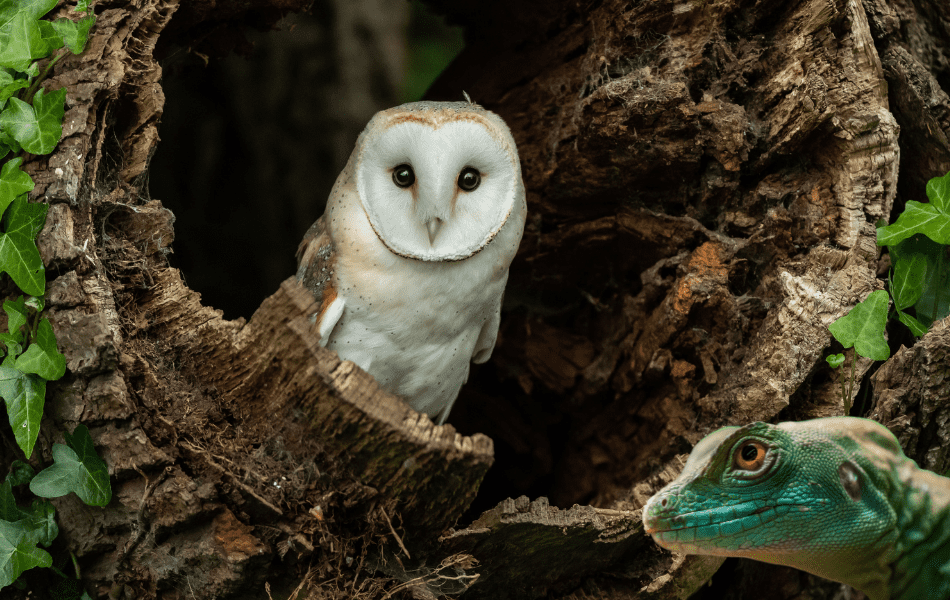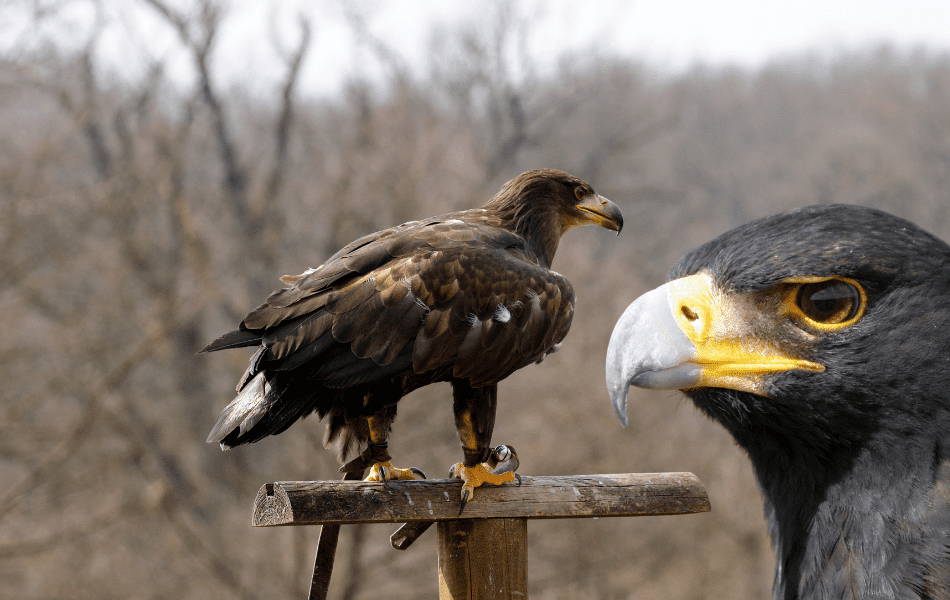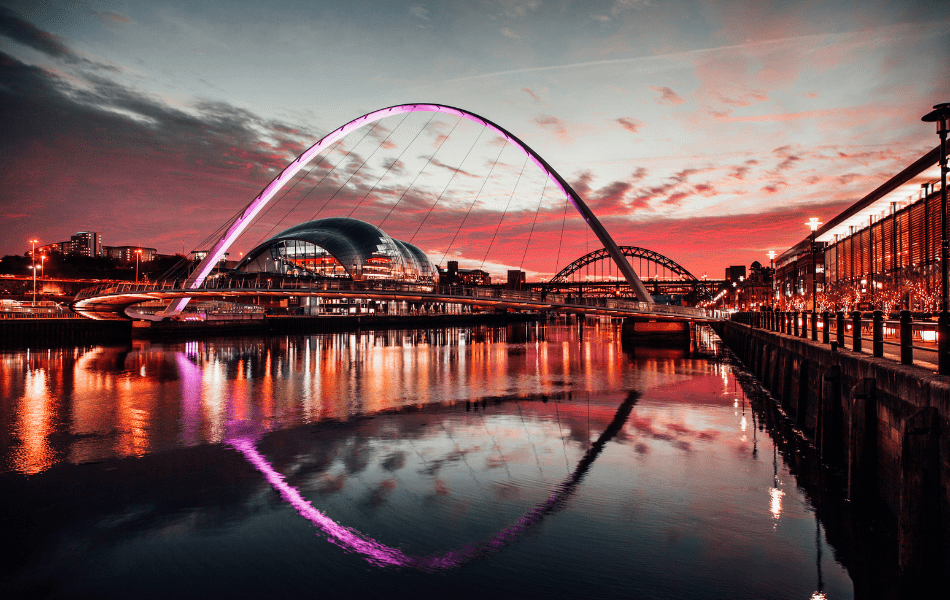Explore England’s North East countryside, vibrant cities, and rich cultural history. From Hadrian’s Wall to Durham Cathedral, there’s something for everyone.
England is made up of nine different regions, each one unique in its individual character in history, geography, purpose, and tourist attractions. In this first article, I am focusing on the North East Region, then moving on to the other regions in other articles.
If you are as fascinated and in love with beaches as I am, read my article 8 Finest Beaches in England. Not only have I suggested the best beaches to visit, but the recommended stays close to those beaches.
9 Different Regions
North East – largest city Newcastle
North West – largest city Manchester
Yorkshire & the Humber – largest city Leeds
East Midlands – largest city Melton Mowbray
West Midlands – largest city Birmingham
South West – largest city Bristol
South East – largest city Guildford
London – London
East of England – largest city Cambridge

Content
- North East Region of England
- Main Cities of this region
- Topography
- 4 Best Castles to Visit in the North East Region of England
- 6 Other Popular Tourist Attractions in North East Region of England
- 2 Waterfalls to be Chased in the North East Region
- Magnificent Bridges in North East England
North East Region of England

Main Cities of this region
There are only three cities in this region, Newcastle upon Tyne is the largest, followed by the city of Sunderland, then Durham. Numerous towns are scattered around, such as Stockton-on-Tees, South Shields, Darlington, and Gateshead.
Topography
Sloping land from west to east, with a number of eastwards-draining rivers including the Wear, Tyne, and Tees. Most people farm and live in the east and south areas as the north and west areas are generally hilly and therefore less populated.
A mountain range called the Pennine Hills (also known as the Pennine Chain or Pennines) runs between three regions of Northern England: North West England on the west, North East England and Yorkshire, and the Humber on the east. If you are an avid hiker and enjoy ascending high peaks (I suggest you read my article before you attempt this challenge), there are two peaks you should aim for.
- Roseberry Topping on the northwestern edge of the North York Moors National Park with magnificent views from the top
- Simonside Hills is on the far northeastern arm of the Northumberland National Park with quite a steep incline. Walk through moorland and conifer forests
Not only do you have the impressive hill regions but also the moorlands such as the Staffordshire Moorlands which form part of the Peak District National Park.

Further up north of the North Pennines, the pleasures of upland hay meadows, bogs, and heaths form part of this diverse landscape. An AONB (Area of Outstanding National Beauty) along the Northumbrian coastline cannot be missed, nor the Kielder Forest which is the largest manmade forest in England.

Spot the Magnesian Limestone grassland dating back from the Perian period. They stretch from Nottingham northwards through Yorkshire and into County Durham, being exposed between Hartlepool and South Shields.
4 Best Castles to Visit in the North East Region of England

From when we are young, stories of fairytales and mystery have intrigued us, allowing our imagination to flow and as adults, we become enthralled and beguiled by the history and magnitude of these castles we can now visit. There are over 70 castles in the North East region, but I will only suggest a few that you should visit.
1. Raby Castle
Located in County Durham

- Built between 1367 and 1390 by John Neville
- Remains the seat of the Vane family and still a private home
- Deer Park in 200 acres of lush parkland
- Plotter Forest with trails and intrigue
- High Force Waterfall
- Accommodation close by High Force Hotel
2. Bamburgh Castle
By the village of Bamburgh in Northumberland

- Destroyed by Vikings in 993 and later being rebuilt by the Normans in 1095
- Visionary inventor, industrialist, and philanthropist William George Armstrong bought the castle in 1894.
- One of the largest inhabited castles in England
- It has many ghost stories, legends, and myths.
3. Warkworth Castle
Ruined medieval castle in Northumberland

- Laid out in its present form in 1200
- Preferred residence of the powerful Percy family from the 14th to the 17th centuries
- n 1915 the castle was declared a scheduled ancient monument, and in 1922 was taken into state guardianship
- Used by William Shakespeare as the setting for several scenes of his Henry IV plays, written in 1597
4. Auckland Castle – also known as Auckland Palace
 |  |
What I so appreciate about Auckland Castle is how they have become the Auckland Project and incorporated the whole community. Once the town of Bishop Auckland was a booming and prosperous mining town, but the mining has declined to increase a social and economic decline.
The Auckland Project now provides a destination that is appealing to tourists and locals alike, as a historical town imparting castles, galleries, nature, food, events, and stays, creating jobs and employment for the locals.
Providing a map of the pleasures you can visit, (which I have indicated above) the website explains what they have done to enhance this area. Have a look and take your time going through it.
Initially, the castle was a deer house and garden in 1183, by Bishop Hugh de Puiset, and later Bishop Antony Bek relocated from Durham Castle taking over the manor and building a castle, and adding the great hall, the chapel, and the defensive walls.
6 Other Popular Tourist Attractions in North East Region of England
1. Durham Cathedral

One of the finest examples of Romanesque architecture in Europe, built-in 1093, with true magnificence when visiting Burham attend a service, in the Nave (the largest section of the cathedral, and is the view you are met with when you enter through the North Door) morning or evening, at the cathedral from Monday to Saturday. Find out Sunday times. This Anglican service you will never forget! The choir with a combination of adults and children sends shivers through you as the sound echoes through the cathedral.
Numerous treasures and collections can be seen in the Durham Cathedral, which are over 1000 years old, such as manuscripts, records, embroideries, and other historic objects, such as the Relics of Saint Cuthbert which were found in 1827.
2. Victoria Tunnel

How exciting is this! You can go on a tour through the Victoria tunnel which runs under Newcastle, for 3.4 km from Town Moor down to the River Tyne, at a depth of 26 m going down to 68 m at the exit. It is well lit so do not worry about being in the pitch-black. Named after Queen Victoria.
On initial construction it was used for transporting coal down to the ships on the River Tyne, on loaded wagons in 1839 and 1842, then later during the Second World War, it was used as an air raid shelter.
3. Farne Islands

This archipelago of 15 to 20 islands (depending on the tides) is a wildlife experience you cannot miss, exciting the birder (If you are not one now, I recommend you read my article) you will be in seventh heaven! These islands are ‘home’ for over 100,000 pairs of breeding seabirds, including 55,000+ pairs of puffins, but do not miss out from late October to mid-December to be enchanted by the seal pups swimming around the boat.
Keep an eye open and cameras ready for the rare bird the roseate tern, with brilliant white plumage, pale rosy pink breast, black cap, and bill, which differ from the common tern, by diving from greater heights for their fish, remaining longer underwater and the flocks are smaller than their counterparts.
4. Stargazing at the Kielder Observatory

Kielder Observatory is the perfect spot to stargaze and get the full impact that the sky has to offer, by being away from as much artificial light as possible. A guide will take you through the solar system with the physical experience of using telescopes, not just the naked eye. Take your torch and binoculars and inside sit in comfort and warmth next to a log fire and then encounter the universe.
5. Birds of Prey Close Encounters
Located in this region there are 3 different birds of prey centers you can visit, with each one being special in its own way. If you are a bird lover or just inquisitive to see these magnificent creatures, I suggest you visit at least one.
1. Walworth Birds of Prey

Owned by Tori and David who is now based in their new location at Bishop Auckland, Co Durham. Book a hunting experience where only two of you will go out with Tori and David. Another option is to go to one of the shows, which lasts between 30 and 45 minutes, where displays and mock hunting with dogs are exhibited. Totally intriguing! Walworth Birds of Prey should be a must to visit.
2. Andy Howey’s Birds of Prey and Reptile Centre

During winter the center is closed but in summer it is a delightful outing where you will observe and have an educational, interactive, and hands-on experience. The Andy Howey’s Birds of Prey displays last for around 45 minutes and it is suggested you arrive 10 minutes before the show starts as the gates are closed while the show continues. If it is raining the show goes on, but inside, so you will not miss out.
Do you love photography, but like me always need to improve those shots? Well, Andy Howey also does photography workshops. (with the best bird of prey models available)
3. Falconry Days

Falconry Days is not a zoo and they do not believe in keeping birds locked up in cages to be a spectacle to the public. They have over 70 different types of birds of prey, and these birds are never sold but will stay with the falconry for their lifetime.
All the birds are flown daily for exercise, freedom, shows, and training which you can take part in by participating in the Falconry Experience Days. Repeatedly they asked to rescue and rehabilitate injured wild birds and once done so they release them back into the wild.
6. Vindolanda and Roman Army Museum

Vindolanda was a Roman Auxillary Fort that was occupied by the Romans from 85 AD to 370 AD and guarded the Stanegate, (Roman road) which stretched from the River Tyne to Solway Firth.
| Vindolanda is known for the “Vindolanda tablets were, at the time of their discovery, the oldest surviving handwritten documents in Britain. They are a rich source of information about life on the northern frontier of Roman Britain. Written on fragments of thin, post-card sized wooden leaf tablets with carbon-based ink.” |
It will take a further 150 years to excavate Vandolanda as only 25% has been excavated to date. Finds from the site are displayed in the Vindolanda site museum, also known as Chesterholm Museum.
| “A remarkable artifact was uncovered in the top layers of the northern Severan ditch fill, some 1.5 meters below the modern-day ground level. A small, child-sized, and eerily life-like bronze hand had been discarded in the ditch. Close inspection of the artifact after conservation at Vindolanda revealed that the 10cm hand originally had an attachment, now missing, inserted into the palm. The hand is very well crafted, especially on the palm-facing side, indicating that its purpose was to profile the object that it once held. The base of the hand is socketed and would have been originally fixed to a pole.” |
2 Waterfalls to be Chased in the North East Region
“Watching a waterfall has an immediate effect by increasing your serotonin levels, which results in improving your mood, decreases depression and anxiety, lessens stress levels, and peacefulness increases your energy levels and leaves you with a feeling of happiness, joy, and awe.” – from my article on Why YOU Should Chase Waterfalls

Hareshaw Linn, near Bellingham
My much-loved waterfall of the North East Region. Walk through ancient woodlands from Bellingham Village and across six bridges, and pass the ‘Cupid’s Bower’ seat, then after the second bridge, on the left are the entrances to two old mine shafts. It is a 4.8 km trail and will take you approximately 1 hr 28 min. Lovely wildlife such as red squirrels, badges and birdlife such as redstarts, dippers and woodpeckers. Site of Special Scientific Interest (SSSI), designated for its rare ferns and lichen.

High Force Waterfall on River Tees
The water from the river Tees plunges almost vertically down for 70 m. During winter the waterfall has been known to freeze. When it has been raining heavily, two falls ascend down in a torrent, both on the dry right-hand side of the channel and the normal left-hand side. At times when the river is very high, the water will pour down covering the centerpiece of the rock formation. The name of High Force of the waterfall is true to its name.
Magnificent Bridges in North East England
“All bridges have the same purpose. To connect two places over a void, either for pedestrians or vehicles. Some bridges created are works of art, weird or very unique.“- from my article Dangerous & Weirdest Bridges

Water, water everywhere so there are numerous bridges all over the North East Region. I will mention 2 of them. When you are visiting as you cross many a bridge take a picture and share them with us in the comments section below. Bridges have a magic of their own and the variety all over the world is enormous.
The Tyne Bridge

In Newcastle, there are 7 splendid bridges that cross over the River Tynes. Linking Newcastle with Gateshead and the Tynes Bridge was opened by George V on 10 October 1928. The bridge and nearby structures are used as a nesting site by a colony of around 700 pairs of black-legged kittiwakes.
Queen Elizabeth II Metro Bridge

Carrying the metro from Newcastle Upon Tyne to Gateshead over the River Tyne, coming out from one tunnel over the river and then into another tunnel. It was only opened on 6 November 1981 by Queen Elizabeth herself only 9 days before the regular metro began.
I hope you have found this article informative. Let me know in the comments below. Defining England as however small it may be, needs to be broken down into regions if not it can be very confusing to understand where you are going.
Recent Posts
Discover insider tips to find cheap flights from the UK, save on easyJet, Ryanair & BA, and score the best weekend and last-minute deals. Why You’re Paying Too Much for Flights Most UK...
Discover the sounds of travel, from laughing kookaburras to market chatter, church bells to ocean waves - a journey heard as much as seen. It always starts with a sound. The other day, walking...


19 thoughts on “Visit England: North East”
Comments are closed.